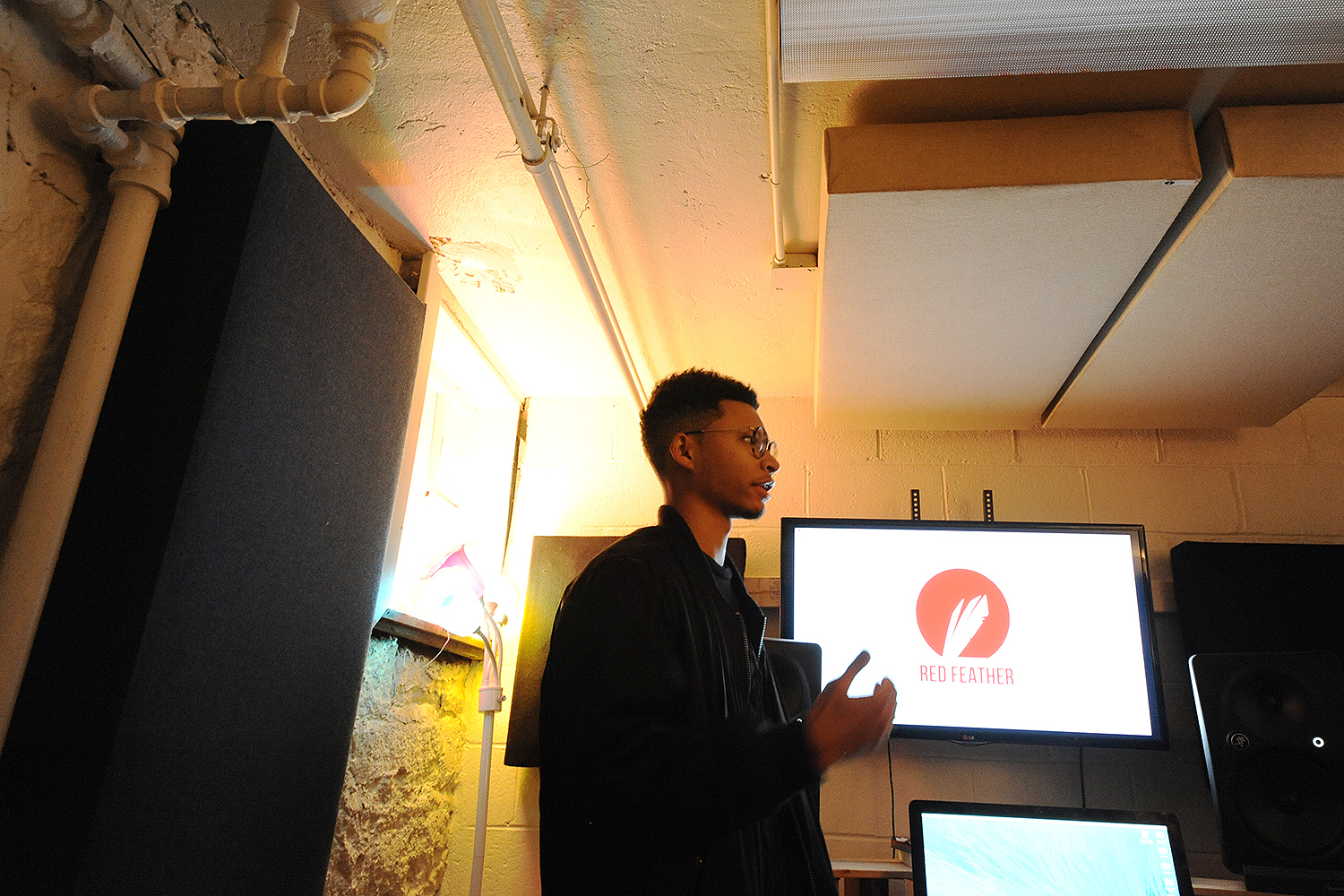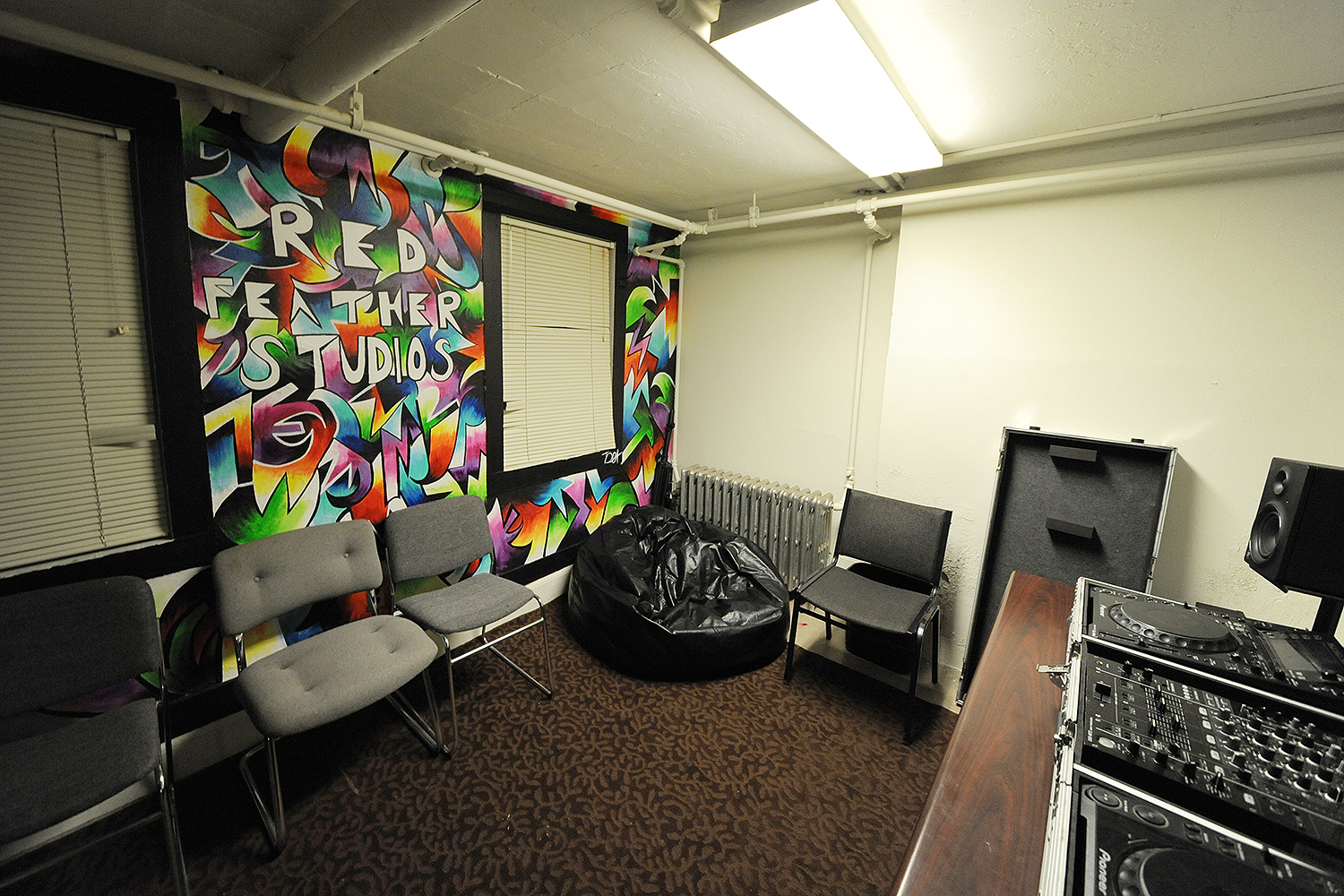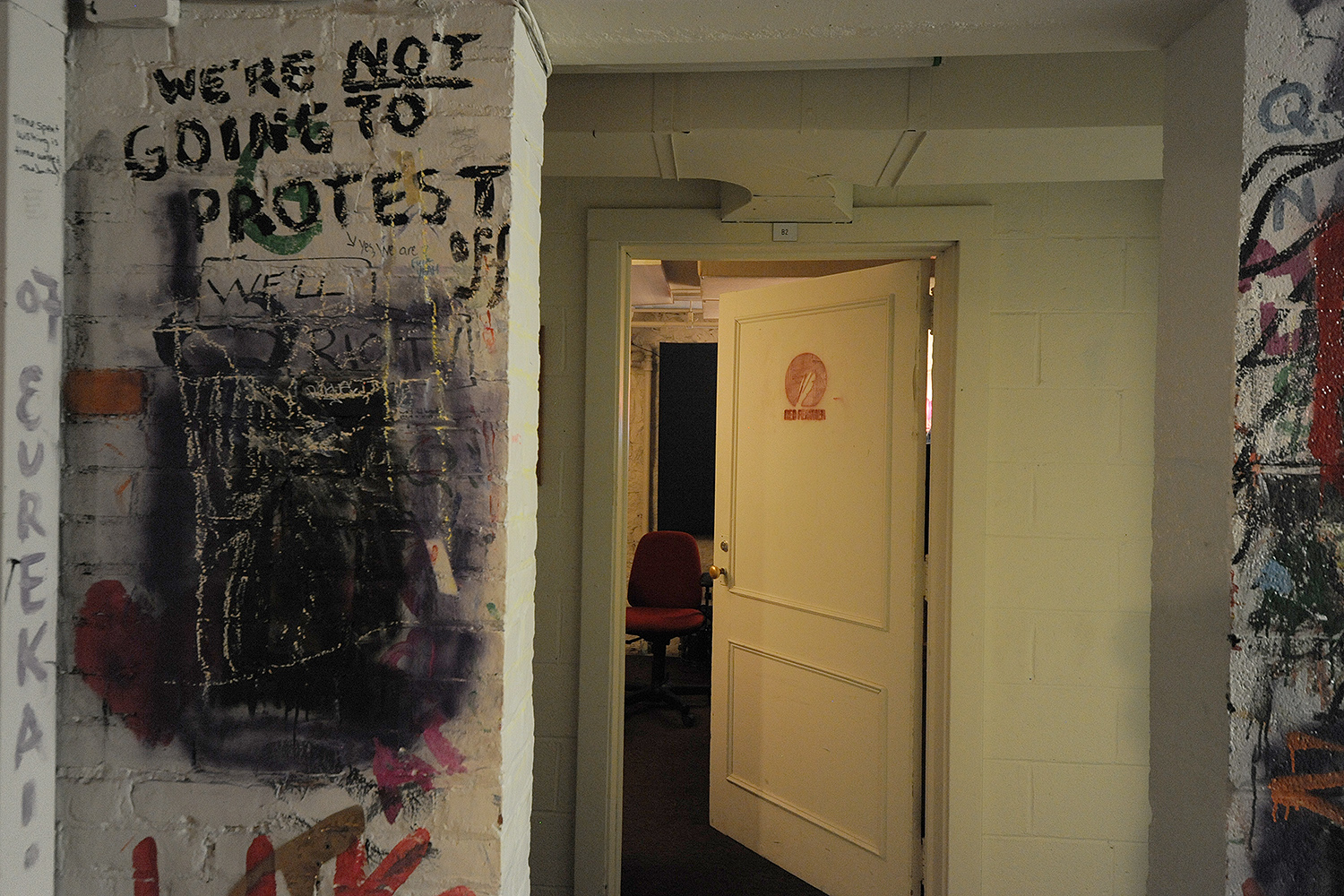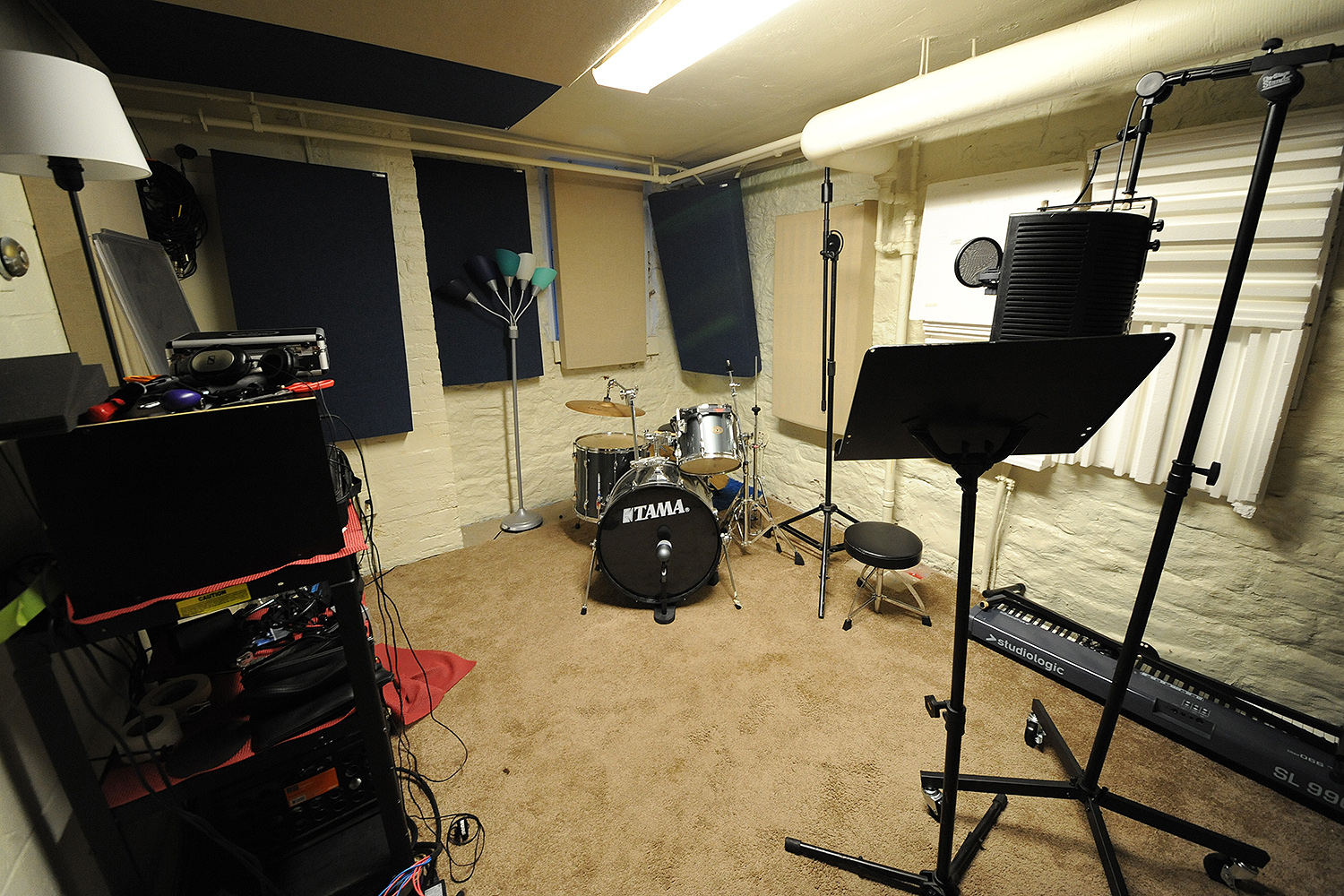Student Artists, Bands Record Music at Red Feather Studios
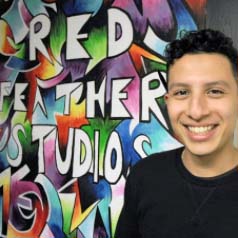

The basement of the University Organizing Center at 190 High Street is now home to Red Feather Studios, Wesleyan’s first and only student-run recording studio.
Red Feather officially opened in spring 2015 after being a work in progress for a few years.
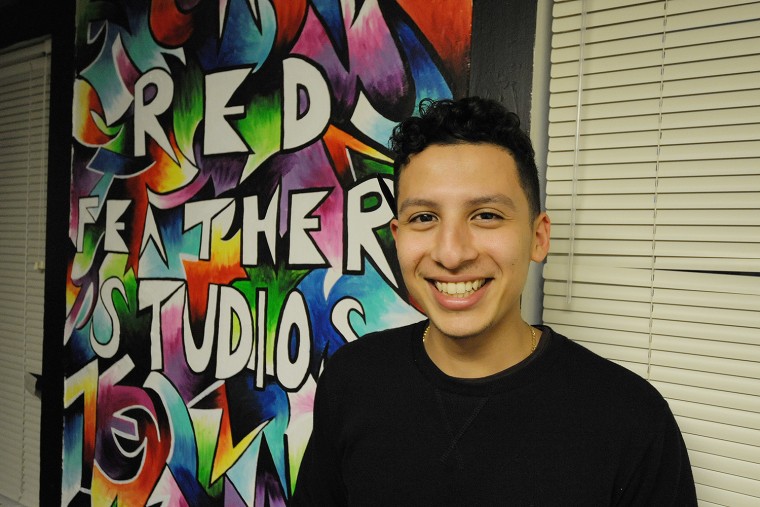
“The music culture at Wesleyan is unlike any I’ve seen at other universities,” added Oscar Parajon ’16, a founding member and head studio manager at Red Feather, who is majoring in American Studies. “Before Red Feather Studios, what was happening was a plethora of ‘bedroom producers’ throughout campus that did not have a platform to make their art.”
According to Parajon, the studio’s name comes from the Wesleyan cardinal mascot, “and the idea that its red feathers have the potential to lift the cardinal to extraordinary heights.”
“I think the need for Red Feather stemmed from a discrepancy between Wesleyan students’ creative output and our collective access to creative resources on campus,” said Derrick Holman ’16, another founding member and head of external affairs. While other colleges and universities have student-run studios, Holman said that Red Feather is unique in being a completely student-run venture, with everything from the idea to the funding to the construction to the day-to-day operations under student control.
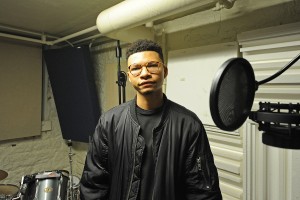
“In my personal experience, I have found that there is so much value in creative freedom and—unlike any other musical space on campus—Red Feather provides its leadership and users with the ability to experiment in an unconstrained manner, not only musically, but also with the process of developing and managing a creative space,” Holman, a sociology major, said.
In its first semester of operation, the studio was booked for upwards of 175 sessions, during which artists, bands and performers logged more than 500 hours of recording, production and musical output, according to Holman.
“So far the response has been amazing,” he added. “To date, we have been responsible for the production of multiple EPs and dozens of songs, and even have a member whose self-produced album is now available for purchase on iTunes that was completed almost entirely in our facilities. To see people embracing the space and creating really dynamic and interesting work is great for everyone involved and is even better for Wesleyan’s constantly expanding musical legacy.”
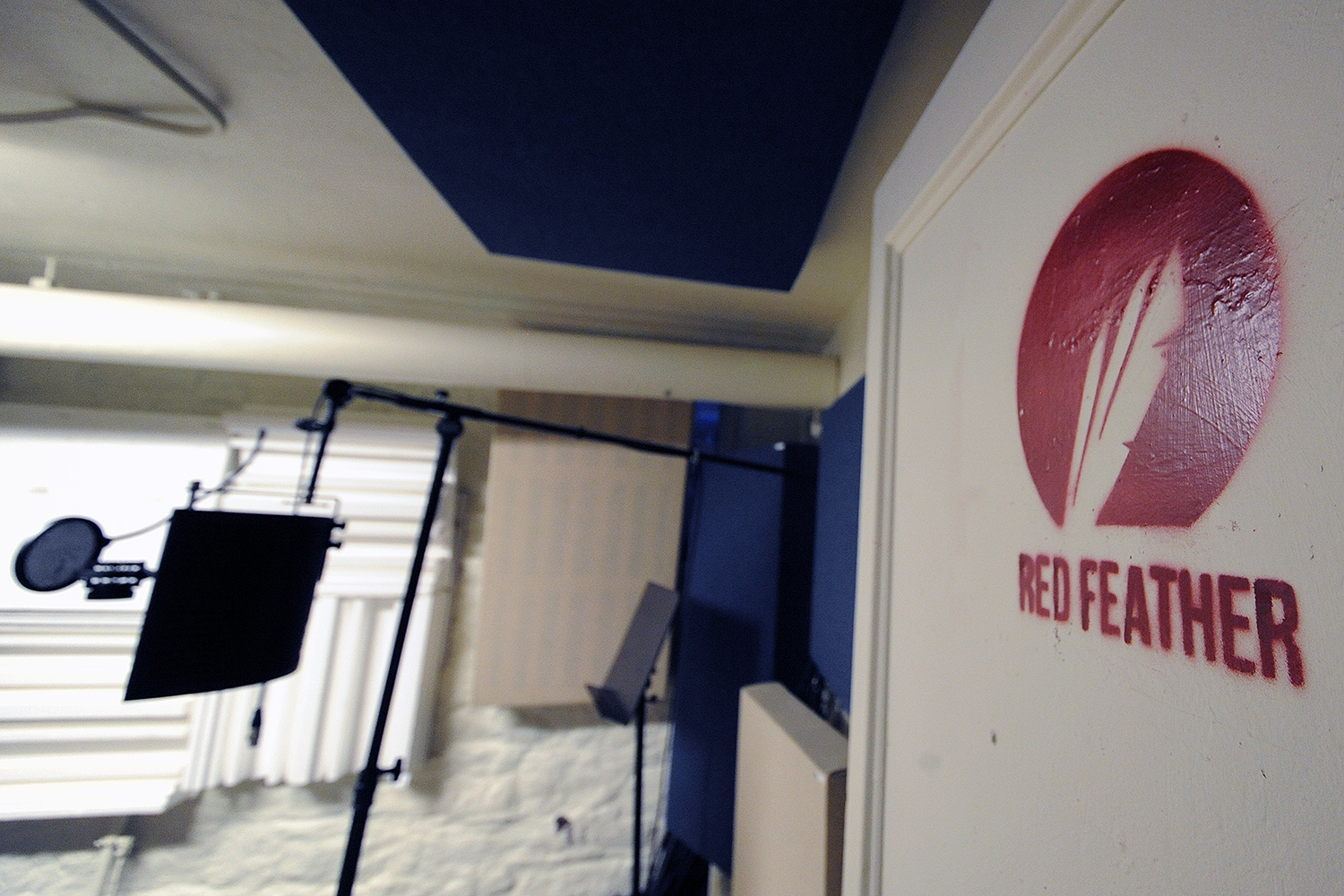
Red Feather’s physical facility was built over the course of a year in three basement rooms in the University Organizing Center previously used for storage. Following a significant amount of work clearing trash, patching up deteriorating walls, and repainting, said Holman, the space became usable. The rooms now serve as a Control Room, where all production, recording, mixing and mastering happens; a Live Room, where instruments and vocals are played and recorded; and a DJ Room, which serves as a practice room for student DJs and vocalists as well as a lounge area.
“At the moment, we have been fortunate in receiving enough funding to provide nearly all the essential functions of a high-level home studio or mid-level professional studio, and we are hopeful that we will be able to continue to improve our capabilities to better serve the campus community,” said Holman. “Our next goal is improving the comfort of the space: simple things like clean rugs and better seating will go a long way.”
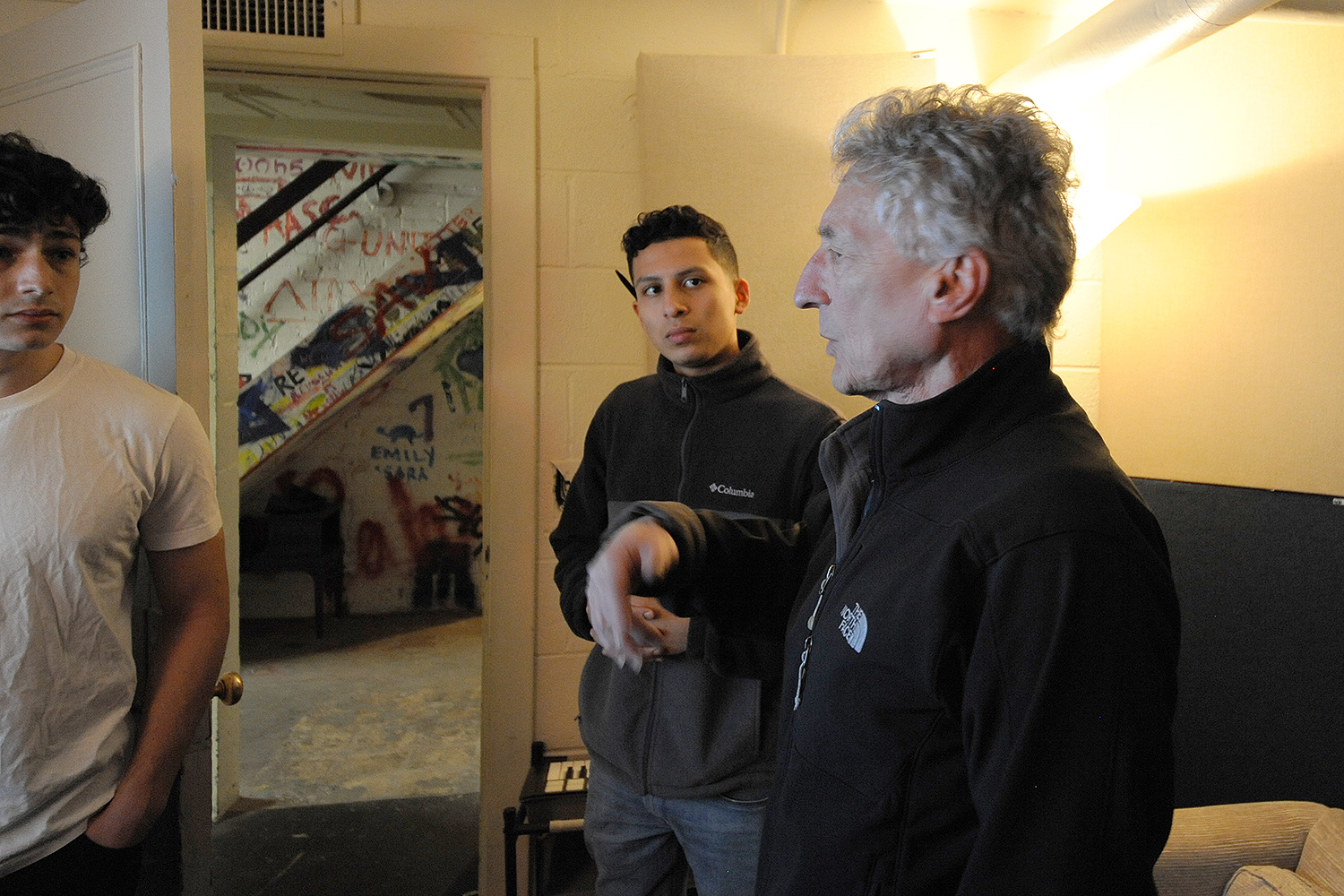
The Student Budget Committee is the primary funder of the studio. Members have made personal donations as well, such as a drum kit, according to Parajon. Since this is such a new endeavor, budgeting needs are still being determined, and the group may face a shortfall if equipment is damaged, for example.
“However, we have such a dedicated team of students who have contributed in so many ways and spent countless hours improving the place that it hasn’t ever been a dire issue,” said Holman.
“In the future, we hope to expand our horizons and partner with other organizations such as the Intercollegiate Label Association,” Parajon added.
Any student wanting to get involved is encouraged to attend the Red Feather team meetings held Sundays at 1 p.m. at 41 Wyllys, or to contact redfeathersound@gmail.com.
More photos of the studio are below: (Photos by Will Barr ’18)



